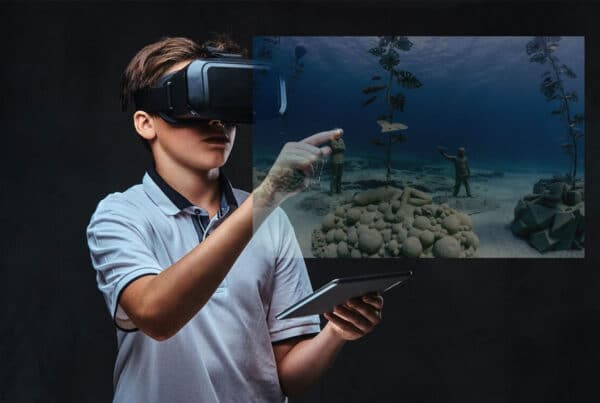
Introduction
As the popularity of 360 video tours continues to grow across various industries, it is essential for creators to understand the regulatory considerations associated with producing this immersive content. While 360 video tours offer unique opportunities for marketing, education, and engagement, they also come with legal and ethical responsibilities. This article explores the regulatory considerations to keep in mind when creating 360 video tours, including copyright issues, privacy concerns, permits, and compliance with accessibility standards.
Copyright Considerations
Understanding Copyright
Copyright law protects original works of authorship, including videos, music, images, and other creative content. When creating 360 video tours, it is crucial to ensure that all elements used in the production are either original or properly licensed.
- Original Content: If you are capturing all footage and audio yourself, you generally hold the copyright to that material. However, if you incorporate third-party content—such as music tracks or images—you must obtain the appropriate licenses or permissions.
- Licensing Music and Media: Using copyrighted music or media without permission can lead to legal disputes and financial penalties. Many platforms offer royalty-free music libraries where you can purchase licenses for specific tracks.
Fair Use Doctrine
The fair use doctrine allows limited use of copyrighted material without permission under certain circumstances. However, fair use is not a blanket exemption and must be evaluated on a case-by-case basis.
- Factors Affecting Fair Use: Courts typically consider four factors when determining whether a use qualifies as fair use:
- The purpose and character of the use (commercial vs. educational).
- The nature of the copyrighted work.
- The amount and substantiality of the portion used.
- The effect of the use on the market value of the original work.
While fair use may apply in some situations—such as educational content—it is essential to consult legal advice before relying on this doctrine for your 360 video tours.
Privacy Concerns
Capturing Individuals in Public Spaces
When creating 360 video tours in public spaces, privacy concerns can arise regarding individuals captured in your footage.
- Consent Forms: It is advisable to obtain consent from individuals who appear prominently in your videos. This is particularly important if you are filming in areas where people may not expect to be recorded.
- Public vs. Private Spaces: Filming in public spaces generally does not require consent; however, filming in private properties often does. Ensure you have permission from property owners before recording.
Identifiable Individuals
Shooting 360 video for “crowd” or general scenery is one thing, but what happens when certain individuals appear very prominently in your footage?
- Waivers for Prominent Characters: If individuals are featured prominently in your video—whether by design or unintentionally—it’s advisable to seek their permission through waivers. This practice is especially important if the end product is intended for broadcast or publication.
- Blurring Faces: If obtaining consent is impractical due to the number of identifiable individuals, consider blurring faces or using other techniques to protect their identities.
Sensitive Topics
When dealing with sensitive subjects—such as health issues or personal stories—extra caution should be exercised regarding privacy and consent.
- Informed Consent: For stories involving sensitive topics, it’s crucial to have clear informed consent from all subjects featured prominently in your video. This ensures that they understand how their image will be used and gives them control over their representation.
Permits and Regulations
Shooting Permits
When filming in public locations or private properties, obtaining permits may be necessary.
- Public Filming Regulations: In many jurisdictions, filming in public spaces may require a permit if it involves commercial purposes. Check local regulations to determine whether you need a permit for your shoot.
- Private Property Permissions: Always obtain permission from property owners before filming on private property. This includes businesses, homes, parks, and other locations not open to the public.
Insurance Considerations
Depending on the scale of your production, you may also need liability insurance to protect against potential claims arising from accidents or damage during filming.
- Coverage Types: Consider obtaining general liability insurance that covers property damage and bodily injury claims related to your filming activities. Some venues may require proof of insurance before granting access for filming.
Accessibility Standards
Creating 360 video tours that comply with accessibility standards is essential for ensuring inclusivity.
Web Content Accessibility Guidelines (WCAG)
The WCAG outlines best practices for making web content accessible to individuals with disabilities. When creating 360 video tours, consider the following:
- Text Alternatives: Provide text descriptions for key visual elements within the tour. This ensures that individuals using screen readers can access important information.
- Captions and Transcripts: Include captions for any spoken content within your video tour. Providing transcripts can also enhance accessibility for users who prefer reading over watching.
- Audio Descriptions: Consider adding audio descriptions that provide additional context about what is happening on screen for individuals who are blind or have low vision.
Compliance with Local Laws
In addition to WCAG guidelines, familiarize yourself with local laws regarding accessibility requirements for digital content. Many jurisdictions have specific regulations that mandate accessibility standards for public-facing websites and digital media.
Ethical Considerations
Beyond legal regulations, ethical considerations should guide your approach to creating 360 video tours.
Transparency with Viewers
Being transparent about what viewers can expect from your 360 video tour fosters trust and credibility.
- Informing Subjects: If filming in a public space where individuals may be captured unintentionally, consider placing signs indicating that filming is taking place. This gives people an opportunity to move away if they do not wish to be included.
- Contextual Clarity: Clearly communicate the purpose of your video tour and how it will be used. This transparency helps viewers understand the intent behind your content.
Respecting Cultural Sensitivities
When filming in culturally sensitive locations or communities, it’s essential to approach your project with respect and consideration.
- Community Engagement: Engage with local communities before filming to gain their insights and address any concerns they may have about how their culture or environment will be represented.
- Cultural Appropriateness: Be mindful of cultural norms and practices when capturing footage in diverse settings. Ensuring cultural sensitivity can prevent misunderstandings and foster positive relationships with communities involved in your project.
Conclusion
Creating 360 video tours offers exciting opportunities for businesses across various industries; however, it also requires careful consideration of regulatory issues related to copyright, privacy, permits, accessibility standards, and ethical practices. By understanding these considerations and implementing best practices—such as obtaining necessary permissions, ensuring compliance with accessibility guidelines, engaging transparently with subjects and viewers—creators can produce high-quality virtual experiences while respecting legal obligations and ethical standards.As technology continues evolving and more businesses embrace immersive content formats like 360 video tours, awareness of regulatory implications will remain vital for maintaining professionalism within this dynamic landscape. By prioritizing compliance alongside creativity, creators can ensure their projects resonate positively with audiences while navigating the complexities of legal frameworks effectively.




